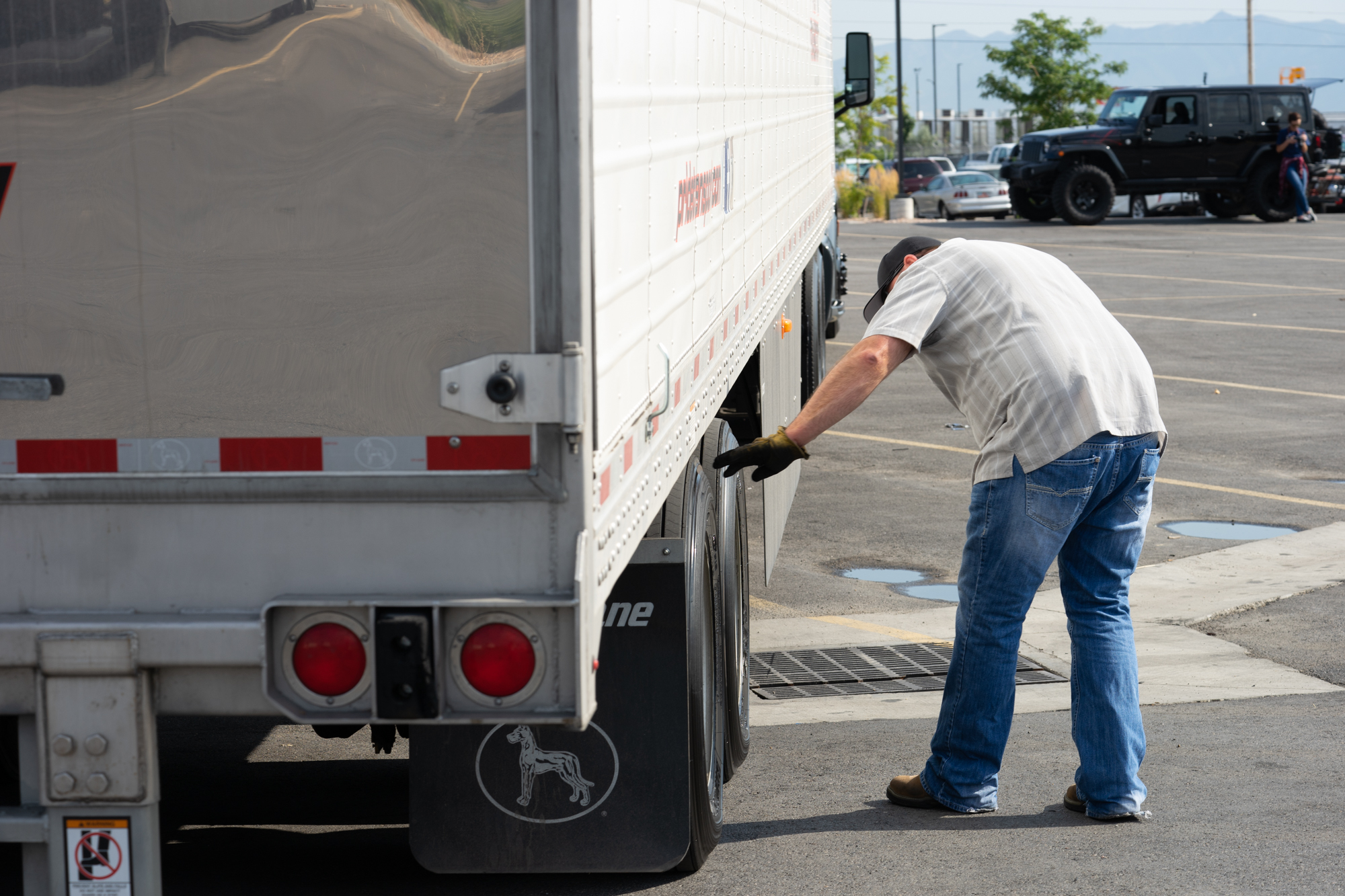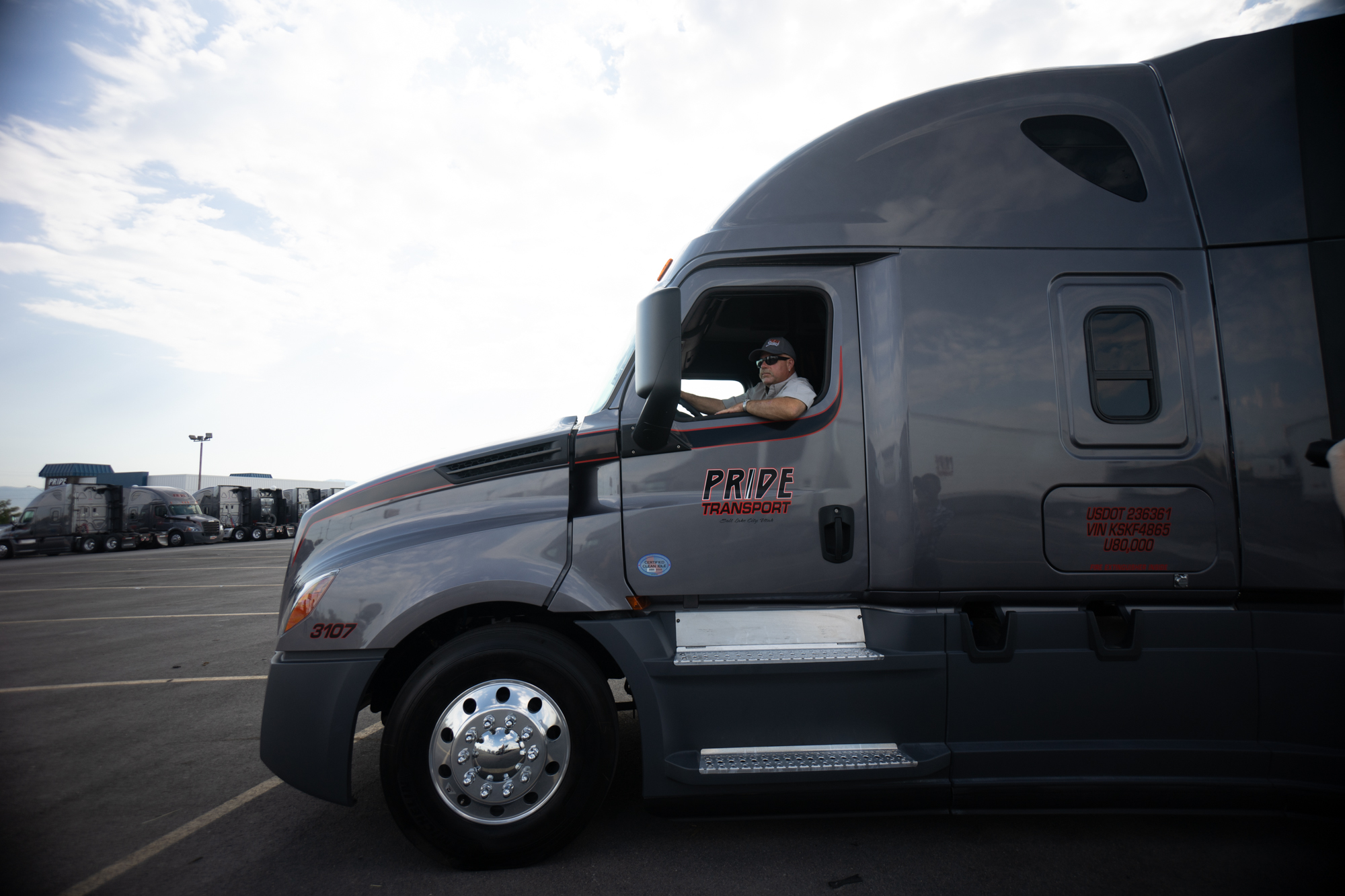by Pride Transport | May 15, 2025
When it comes to road safety and staying compliant with federal regulations, one detail that often gets overlooked is tire tread depth. But for commercial truck drivers, it’s a crucial part of daily operations. Proper tire tread depth doesn’t just help you pass DOT inspections, it’s also key to maintaining traction, ensuring smooth handling, and staying safe behind the wheel.
Whether you're a new driver just learning the ropes or a seasoned pro looking to brush up on DOT regulations, this information is essential to keeping you, your truck, and others on the road safe.
The Importance of Tire Tread Depth for Trucks
Tire tread depth directly affects how your truck grips the road. Deep, healthy tread helps channel water away in wet conditions, reduces the risk of hydroplaning, and ensures better traction when braking or turning. For commercial trucks, the amount of weight being hauled and the increased distance to stop make tire conditions even more critical.
Worn-out tires increase the risk of:
- Blowouts, especially at highway speeds.
- Skidding and longer stopping distances.
- DOT violations during roadside inspections.
If you’re not checking your tread regularly, you could be risking your safety and your ability to stay on the road legally.

Truck Tire Tread Depth Requirements
The Federal Motor Carrier Safety Administration (FMCSA) has clear guidelines on what constitutes a safe minimum tire tread depth:
- Steer tires (front wheels): At least 4/32 of an inch
- Drive tires and trailer tires: At least 2/32 of an inch
These standards aren’t arbitrary. They’re based on how each tire functions. Steer tires, located at the front of the truck, play a bigger role in handling and stability. They need more tread to ensure better grip for precise steering and control. Drive and trailer tires, while still important, don’t bear the same directional responsibilities, which is why the minimum requirement is slightly lower. To measure tread depth accurately, drivers should use a tire tread depth gauge.
Risks of Non-Compliance with Tire Tread Regulations
Failing to meet the minimum tread depth requirements can result in serious consequences:
-
DOT Inspections & Penalties - If a DOT inspector finds that one or more of your tires are below the legal limit, you could face fines, points on your CSA score, or worse, your truck could be placed out of service on the spot.
-
Increased Accident Risks - Low tread means less grip. That leads to poor braking performance, especially in wet or icy conditions. It increases your risk of losing control, especially when cornering or making sudden stops.
-
Higher Maintenance Costs - Worn tires can also throw off your vehicle’s alignment, causing uneven wear on suspension components and axles. Over time, that leads to higher repair bills and more downtime.
Best Practices for Maintaining Proper Tire Tread Depth
Staying ahead of tread wear doesn’t just help you avoid violations. It also keeps you safer and saves money over time. Here are some best practices every driver should follow.
Regular Tire Inspections
Check your tire tread at least once a week and always during pre-trip inspections. Look for signs of wear, punctures, or visible tread wear indicators. Catching a problem early can save you from bigger issues down the road.
Proper Tire Inflation & Pressure Monitoring
Maintaining the right pressure is just as important as tread depth. Underinflated tires cause rapid tread wear and reduce fuel efficiency, while overinflated tires wear unevenly and increase the risk of blowouts. Invest in or use trucks equipped with TPMS (Tire Pressure Monitoring Systems) to get real-time pressure readings.
Tire Rotation & Alignment
Regularly rotating your tires ensures they wear evenly, which helps extend their life and maintain consistent tread depth across all wheels. You may need an alignment check if your truck pulls to one side while driving, you notice uneven tread wear or if there’s steering wheel vibration at higher speeds.
Knowing When to Replace Tires
Even if a tire technically meets the legal tread minimum, it may still be unsafe if:
- The tread wear indicators (also known as wear bars) are flush with the tread.
- The tire has visible damage like cuts, cracks, or bulges.
- The rubber shows signs of aging like dry rot.
When in doubt, replace it. Your safety and the safety of others on the road is always worth it.
The Importance of Tire Maintenance for Truck Drivers
There are many reasons that maintaining a proper tread depth is important for drivers. Here are a few of the most common
Safety on the Road
Good tires are your first line of defense on slick or steep roads. Whether you’re navigating rain, snow, or rough terrain, deep tread and proper inflation keep your truck stable and responsive.
Cost Savings & Fuel Efficiency
Tires with proper tread and correct inflation reduce rolling resistance, which means your engine doesn’t have to work as hard. That equals better fuel economy, fewer tire replacements, and lower overall maintenance costs.
Compliance with FMCSA & DOT Regulations
Staying compliant with tire tread depth DOT regulations is non-negotiable. Regular maintenance helps you avoid citations, pass inspections smoothly, and keep your vehicle on the road and earning.
Tire tread depth might seem like a small detail, but it plays a huge role in your performance, safety, and compliance. A few minutes spent checking your tires regularly can prevent breakdowns, avoid costly fines, and keep you rolling with confidence.
Pride Transport’s Commitment to Safety
If you’re looking for a driving career where safety is a top priority and maintenance support is built-in, Pride Transport could be your next move. We prioritize the safety and success of every driver on our team. Check out our careers page to learn more about joining a company that puts drivers first, on the road and off.
